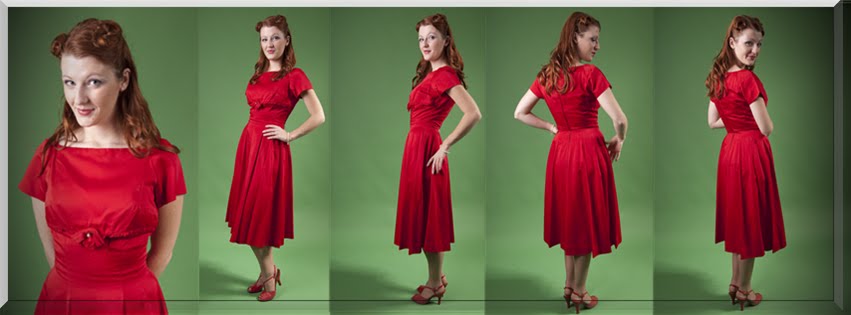
Currently, I am reading a small paperback published in the early 1950s titled
I Leap Over the Wall by Monica Baldwin, "the Bestselling Story of a Nun who Returned to the World after 28 Years in a Convent."
I love a good biography, But I knew I would be sharing excerpts here after reading her observations of fashion. She had entered the convent in 1914 and while there- cut off from the world, clothing had made a radical turn by the time she left in the early 1940s:
"The Crescendo of Shocks which awaited me began abruptly with my first introduction to up-to-date underwear. Frankly, I was appauled.
The garments to which I was accustomed had been contrived by thorough-going ascetics in the fourteenth century, who considered that a nice, thick, long-sleeved 'shift' of rough, scratchy serge was the right thing to wear next to your skin. My shifts, when new, had reached almost to my ankles. However, hard washing and much indescriminate patching soon stiffened and shrank them until they all but stood up by themselves. Stays, shoulder-strapped and severely boned, concealed one's outline; over them, two long serge petticoats were lashed securely around one's waist. Last came the ample habit-coat of heavy cloth, topped by a linen rochet and a stiffly starched barbette of cambric, folded into a score of tiny tucks and pleats at the neck.
So when my sister handed me a wisp of gossamer, about the size and substances of a spider's web, I was startled.
She said, "Here's your foundation garment. Actually, most people only wear pants and a brassiere, but its cold to-day so I thought we'd better start you with a vest."
I examined the object, remembering 1914. In those days, a 'nice' girl 'started' with long, woolly combinations, neck-high and elbow-sleeved, decorated with a row of neat pearl buttons dow the front...
Next came the modern version of the corset. It was the merest strip of elastic brocade from which suspenders, in a surprising number, dangled. I thought it a great improvement on the fourteenth century idea. The only drawback was that you had to insert your person into it, serpent-fashion, as it had no fastenings.
What bothered me most were the stockings. The kind I was used to were emormous things, far thicker than those men wear for tramping the moors and shrunk by repeated boiling to the shape and consistency of a Wellington boot. The pair with which Freda had provided me were of silk, skin-coloured and so transparent that I wondered why anyone bothered to wear the things at all.
I said firmly, 'Freda, I can't possibly go out in these, They make my legs look naked.'
She smiled, patiently.
'Nonsense,' she said. 'Everyone wears them. If you went about in anything else you'd collect a crowd.'
By this time it had become clear to me that the generation which affected the transparencies in which I now was shivering must long have scraped the kind of garments I had worn as a girl. I wondered what they had done about the neck-high camisoles with their fussy trimmings of lace and insertion and those incredibly ample, long-legged white cotton drawers. The answer turned out to be an airy nothing called 'camiknickers,' made apparently, of cobweb. I felt my teeth beginning to chatter as I put it- or should one say 'them'?- on.
One further shock awaited me.
An object was handed mto me which I can only descrive as a very realistically modelled bust-bodice.. That its purpose was to emphasize contours which, in my girlhood, were always deocorously concealed was but too evident.
'This,' said my sister cheerfully, 'is a brassiere. And it's no use looking so horrified, because fashions to-day go out of their way to stress that part of one's anatomy. These things are supposed to fix one's chest at the classic angle. Like this--'
She adjusted the object with expert fingers. "There--you see the idea?"
Pages 8-9, Copyright 1950, Signet Books.

No comments:
Post a Comment